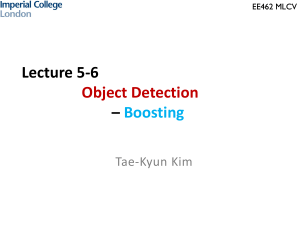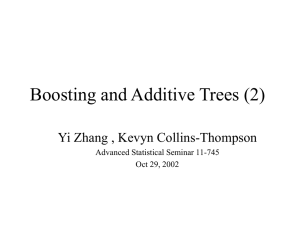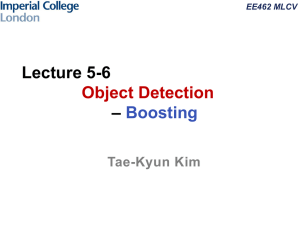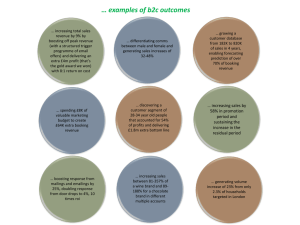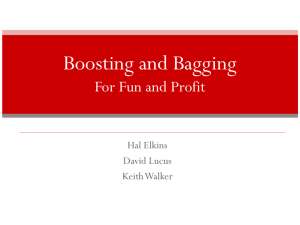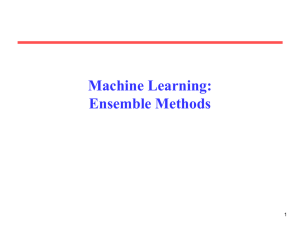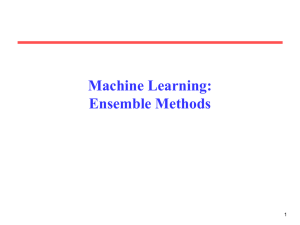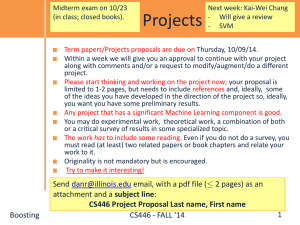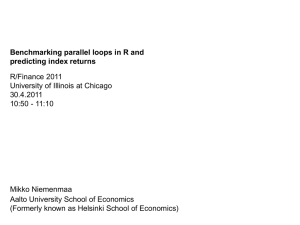Lecture 6: Boosting
advertisement
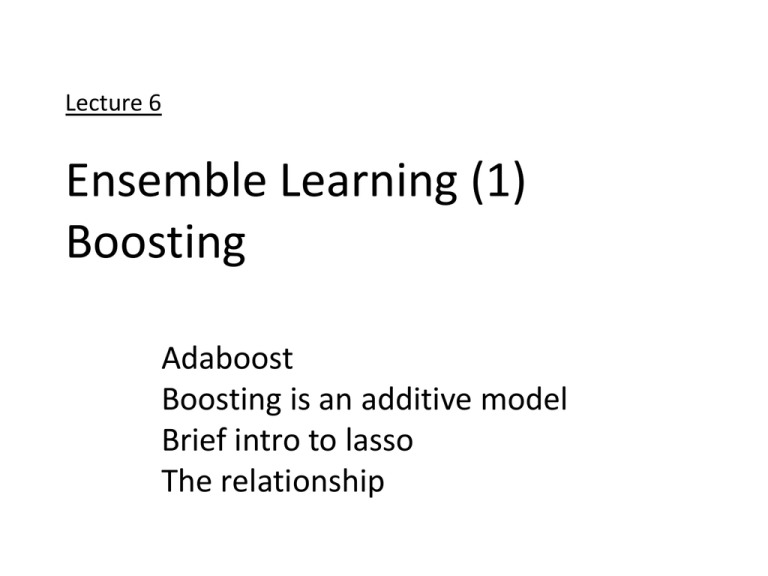
Lecture 6
Ensemble Learning (1)
Boosting
Adaboost
Boosting is an additive model
Brief intro to lasso
The relationship
Boosting
Combine multiple classifiers.
Construct a sequence of weak classifiers, and combine
them into a strong classifier by a weighted majority vote.
“weak”: better than random coin-tossing
Some properties:
Flexible.
Able to select features.
Good generalization.
Could fit noise.
Boosting
Adaboost:
(Freund
&Schapire
1995)
Boosting
“A Tutorial on Boosting”,Yoav Freund and Rob Schapire
Boosting
“A Tutorial on Boosting”,Yoav Freund and Rob Schapire
Boosting
“A Tutorial on Boosting”,Yoav Freund and Rob Schapire
Boosting
“A Tutorial on Boosting”,Yoav Freund and Rob Schapire
Boosting
Boosting
This is the weight of the current weak classifier in
the final model.
This weight is for individual observations.
Notice it is stacked from step 1.
If an observation is correctly classified at this step, its
weight doesn’t change.
If incorrectly classified, its weight increases.
Boosting
Boosting
Boosting
Boosting
10 predictors
The weak
classifier is a
Stump: a twolevel tree.
Boosting
Boosting can be seen as fitting an additive model, with
the general form:
Expansion
coefficients
Examples of γ:
Sigmoidal function in
neural networks;
A split in a tree model;
Basis functions:
Simple functions of feature
x, with parameters γ
Boosting
In general, such functions are fit by minimizing a loss
function
This could be computationally intensive.
An alternative is to go stepwise, fitting a sub-problem of a
single basis function
Boosting
Forward stagewise additive modeling --- add new
basis functions without adjusting previously added
ones.
Example:
* Squared loss function is not good for classification.
Boosting
The version of Adaboost we discussed uses this loss
function:
The basis functions are individual weak classifiers.
Boosting
Margin: y*f(x)
>0, correct
<0, incorrect
The goal of classification –
to produce positive margin
as much as possible.
Negative margin should be
penalized more.
Exponential penalize
negative margin more
heavily.
Boosting
To be solved:
Independent
from β and G
Boosting
Observations are either correctly or incorrectly
classified. Then the target function to be minimized is:
For any β> 0, Gm has to satisfy:
G is the classifier that minimizes the weighted error rate.
Boosting
Solving for the Gm will give us a weighted error rate.
Plug it back to get β:
Update the overall classifier by plugging these in:
Boosting
The weight for next iteration becomes:
Using
Independent of i.
Ignored.
Lasso
The equivalent Lagrangian form:
j2
Ridge regression:
Elastic Net: åéëa b j + (1- a ) b j2 ùû
Lasso
s
t
ˆ
j
Lasso
ˆ j
ˆ j
Orthogonal x
ˆ j are the least squares estimates
ˆ j
Lasso
Lasso
Ridge
Error contour in parameter space.
Boosted linear regression
{Tk} : a collection of basis functions
Boosted linear regression
Here the T’s are X’s themselves in a linear regression
setting.
